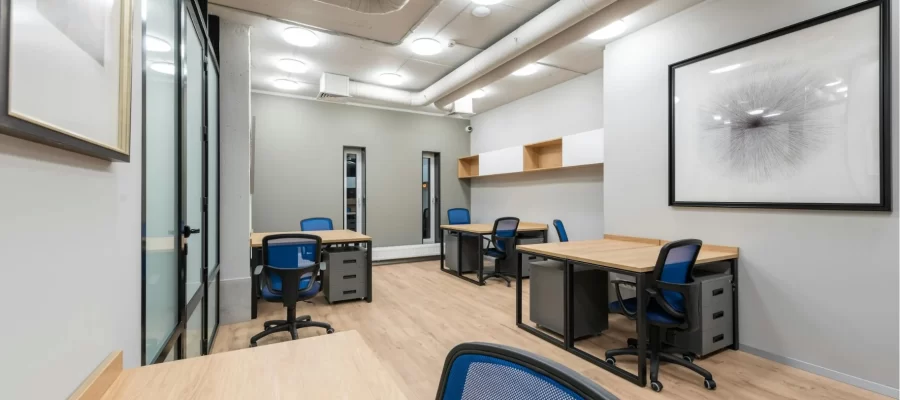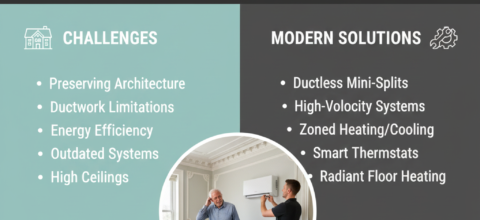From Greenwich to Danbury: How Duct Cleaning Needs Vary Across Fairfield County Businesses
Fairfield County is an interesting patchwork of businesses—some historic, some sleek and modern, all with different demands on their indoor systems. Whether it’s a yoga studio in Westport or a manufacturing facility in Danbury, building owners across the region face unique challenges when it comes to keeping indoor air healthy. And surprisingly, it all comes down to how each commercial ductwork setup is used—and abused—over time.
One System, Many Variables
No two buildings in Fairfield County use their systems the same way. A cozy café in New Canaan will have vastly different airflow needs than a corporate headquarters in Stamford or a clinic in Ridgefield. While the goal is always clean air, the path to getting there isn’t identical. The age of the building, layout, occupancy rate, and type of business all shape how—and how often—a system needs to be serviced. That’s where the real differences in commercial ductwork needs begin to show up.
When Offices Collect More Than Just Paperwork
It’s easy to assume office spaces are low-maintenance. They’re not producing sawdust or cooking grease, after all. But offices, especially multi-tenant buildings, keep their systems running day and night. Shared ventilation means whatever’s floating around in one suite can quietly move to the next. For many of these buildings, especially the older towers around Stamford, buildup happens slowly and subtly. Inspections can uncover issues before they start affecting the comfort or energy efficiency of the space.
Retail Stores and All the Foot Traffic
Shops and salons in towns like Greenwich and Darien are busy places, and every customer brings in a bit of the outside world. Dust, pollen, fabric fibers—it adds up. Retail environments might look spotless, but their systems tell a different story. These buildings may not need aggressive service cycles, but they absolutely benefit from consistent check-ins. Add in fragrance particles or the occasional seasonal display (think artificial snow or glitter), and buildup starts to shift from cosmetic to functional.
Industrial Properties Have Their Own Rules
It’s not unusual to find warehouses and fabrication spaces with more intensive air demands out in Danbury or Bridgeport. These setups often involve complex zoning, heavier equipment, and more airborne particles than you’ll find in an office or boutique. For businesses that cut, melt, or process materials, airflow isn’t just about comfort—it’s about controlling contamination and protecting machinery. When systems serve this kind of environment, their commercial duct system needs to be on a faster clock, with physical cleaning more frequent than in standard properties.
Wellness Spaces Require More Than Just a Fresh Scent
Spas, fitness studios, and wellness centers operate in environments where moisture, heat, and constant airflow are part of daily life. With showers, steam, and climate-controlled rooms all in play, these spaces create the kind of conditions where microbial buildup can take hold if left unchecked. In areas like Westport, where the client experience is everything, many owners turn to UV light installation and gentle, eco-conscious antimicrobial treatments to maintain both comfort and cleanliness. Clean air in these settings isn’t a bonus—it’s an essential part of the atmosphere.
Healthcare Facilities and Clean Air Protocols
When it comes to clinics and labs, even minor issues can become major concerns. Facilities in Norwalk, Stamford, or Ridgefield tend to include specialized airflow zones—pressurized rooms, filtration chambers, or separate return air routes. That complexity means the system has to be managed carefully. It’s not just about frequency, it’s about knowing how to work around active medical environments. Sanitizing airflow paths helps protect patients and staff, and it’s often part of a larger compliance strategy tied to inspections and licensing.
Schools: Quiet Buildings, Busy Systems
Educational spaces might seem calm when classes are out, but their mechanical systems are often anything but. In towns like Fairfield and Greenwich, many schools and campuses are housed in older buildings, some retrofitted multiple times over the decades. That patchwork design can lead to airflow inconsistencies and unexpected zones of buildup. Cleaning tends to happen during breaks, but the timing and scope of that service matters. A good system check before the school year starts can prevent mid-semester disruptions.
Restaurants Face an Entirely Different Challenge
If you’ve spent time in a kitchen, you know that smoke, grease, and heat are part of the rhythm. What’s less obvious is how much of that ends up in the vents. Restaurants typically have multiple airflow systems: one for the dining area, one for the kitchen, sometimes more. If they’re not properly maintained—or if the wrong kind of particles migrate into other parts of the system—things get complicated. This isn’t just about clean air anymore. It’s about reducing fire risk and staying compliant with health inspections.
The Role of the Commercial AC Unit in the Equation
Temperature control plays a big part in system strain. A commercial ac unit running around the clock—especially in a building with fluctuating occupancy or older insulation—can speed up internal buildup. Coils get dirty, airflow slows down, and cooling costs climb. Without proper upkeep, even a minor clog or mechanical issue can create ripple effects across the entire building. And for large properties, that’s not a small repair ticket.
It’s About More Than Just Time
How often should you schedule service? There’s no single answer. Offices might go three or four years without needing major attention. Meanwhile, a busy gym or manufacturing floor might need a full system reset every 12 to 18 months. What really matters is how the building’s used, and how that use affects the system. When in doubt, a diagnostic inspection can go a long way. It’s easier (and cheaper) to catch problems early than to deal with a full breakdown later.
Old Buildings, New Problems
Fairfield County has its share of charming, older buildings. And while they may look timeless from the outside, their mechanical setups often tell a different story. Poor access, outdated insulation, or old construction methods can make modern maintenance tricky. Some systems weren’t built with inspection or access in mind, which means the cleaning process requires a bit more creativity—and a lot more care. For buildings like these, sticking to a rigid service schedule isn’t always practical. A customized plan often works better.
Tailoring the Approach
This is the part where nuance really matters. A 20,000-square-foot logistics center in Bridgeport needs a completely different maintenance plan than a wellness clinic in Darien or a school in Wilton. Square footage is only one part of the equation. System complexity, occupancy load, and what actually happens in the space are the real deciding factors. A provider who understands those variables is far more valuable than a flat-rate solution.
Bringing It All Back to Fairfield County
From the coastline in Greenwich to the hills of Danbury, businesses in Fairfield County rely on their air systems more than most people realize. But how they manage those systems varies widely—and for good reason. Airflow isn’t a one-size-fits-all game. It shifts depending on who’s in the building, what they’re doing, and how long they stay. Addressing system health means paying attention to those patterns, not just the calendar.
Small Adjustments, Big Impact
If it’s been a while since anyone took a closer look at your building’s airflow, now’s a good time to start. Businesses across Fairfield County are already adjusting their approach based on how their systems are used—not just how they’re built. Whether you’re in retail, hospitality, healthcare, or industry, thoughtful commercial ductwork maintenance can make a noticeable difference.










